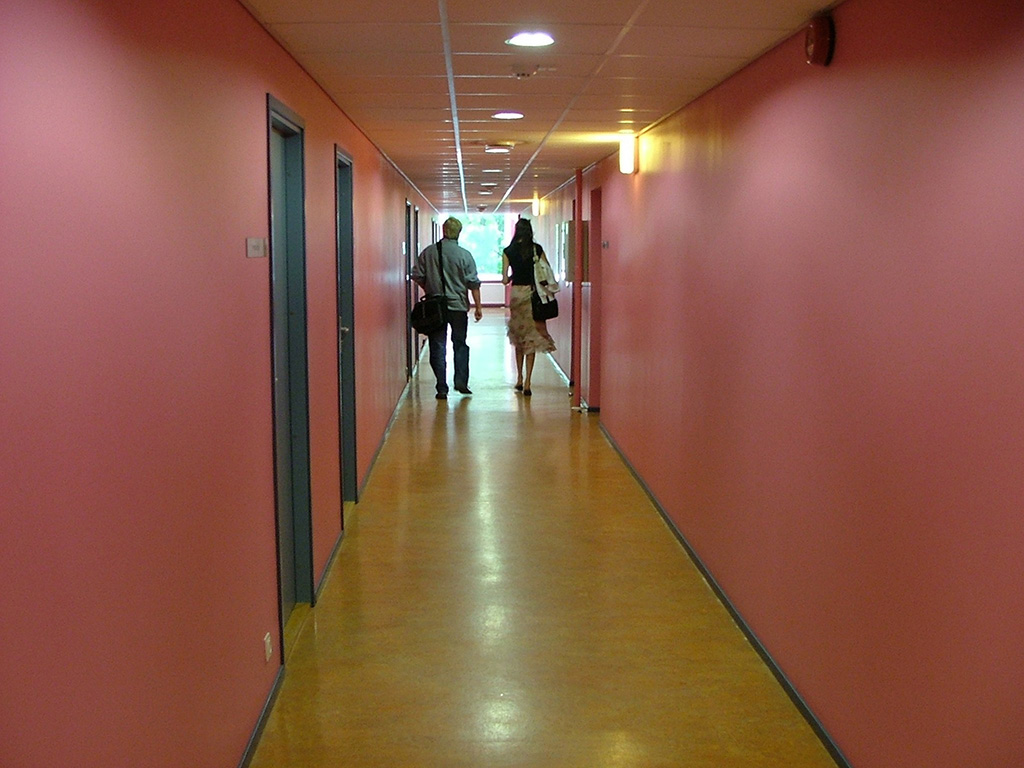During the pandemic, K-12 teachers and staff quit their jobs more than all other US professions, with 2 out of 5 telling a Gallop poll in 2022 that they were burned out. All told, 300,000 teachers quit US schools in just 2 years. What’s worse, according to the Economic Policy Institute (EPI) and many others, the pandemic exacerbated a teacher shortage which began during the Great Recession of 2008-2009.
While new teachers were certainly part of the burnout story, even effective teachers, teachers with accolades, and veteran teachers, left the profession. This story was especially repeated for special education teachers and those teaching math.
Besides the obvious brain drain resulting from so many teacher resignations recently, the shortage of teachers, and the decline in public perception of teaching as a profession, are leading to deep, structural problems in K-12 education which require urgent attention that may still require years of effort to fix.
Teacher resignations have become a major factor affecting public education in the US; without enough qualified teachers willing to work in the classroom, schools struggle to provide quality instruction and many current teachers feel undervalued and unsupported by their districts. Solutions may not come easily, with districts coming under budget pressures as they try to recover student test scores while preparing for a post-pandemic recession. But effective strategies for reversing the teacher shortage exist, especially once the situation is better understood.
Help teachers differentiate their classrooms!
Top Reasons for Teachers Quitting
Low salaries and benefits are a major factor contributing to the recent teacher resignations. Despite the important role they play in educating our youth, many public school teachers have been underpaid for decades. With little room for financial growth or stability, many educators find themselves unable to make ends meet or cover necessary expenses such as medical bills or student loan payments. Furthermore, many teaching jobs lack adequate health insurance benefits and other forms of support that can help offset the cost of living.

The number of teachers quitting their positions is on the rise, and there are a variety of factors contributing to this trend. Besides the lack of adequate salaries and health benefits in some school districts and states, some teachers leave their jobs in search of better compensation elsewhere. Additionally, there is a national shortage of qualified teachers, particularly in special education and math, making it difficult for schools to fill teaching vacancies. This has resulted in an overworked and underpaid staff where effective teachers feel they have no choice but to resign due to the lack of job security and resources. Moreover, current teachers are facing increasing burnout due to overwhelming mental health issues such as stress, anxiety, and exhaustion. As a result, many educators are finding that teaching is no longer a viable option for them and decide to pursue other career paths instead.
But teachers are not quitting simply over pay. A variety of factors are contributing to high teacher job turnover, including:
- Decline in teacher pay. According to the EPI, relative teacher wages and total compensation (including health benefits) have been declining for over 50 years when compared to other professions requiring a college degree.
- Mental health. As noted above, teachers feel stressed and burned out especially after the Covid-19 pandemic. During the 2008-2009 Great Recession, teachers experienced layoffs, fewer resources, lower budgets, and larger class sizes, all of which contributed to job-related stress. The pandemic exacerbated this stress, forcing most teachers to completely alter their teaching environment, creating additional stresses and concerns.
- More student behavior problems. Many teachers exiting the profession are citing growing behavioral problems amongst their students, who are stressed and suffering their own mental health challenges due to the Covid-19 pandemic. More teachers than ever are citing safety concerns as reasons for job stress.
- Poor working conditions. Along with declining pay and job stress, teachers generally feel unsupported by administrators and school districts, and during the pandemic had to comply with restrictive changes to their teaching environment. The teacher shortage also affects employed teachers, by placing more stress on existing teachers as their class sizes increase and new teachers need support, especially if these situations materialize on short notice.
- Politics. From parents upset about Covid-19 mask requirements, to vaccination requirements, to state-mandated curriculum and library book content restrictions, teachers feel caught in the middle of the modern culture wars. Some teachers cited a lack of respect from parents as the number one reason for their departure from the profession, especially in classrooms which traditionally teach delicate subjects which can generate controversy, such as AP literature.
- Better jobs elsewhere. Because of record low unemployment, worker demand is at historically high levels, especially for a sustained period. Existing teachers as well as potential recruits are all finding jobs in the private sector with better pay, better benefits, more flexibility, and better work-life balance.
Compounding the teacher shortage, low salaries, limited health benefits, and fears of culture wars can make teaching an unattractive profession for potential recruits.
Teacher Turnover Statistics
Recent statistics show that teacher turnover rates have been rising in recent years, with roughly one in six teachers leaving their job each year in some states. This is an alarming trend as it means fewer qualified teachers are available to teach our nation’s children. The problem is particularly pronounced among special education and math teachers, where the vacancy rate reaches up to 40%. Low salaries, lack of resources and support from school districts, and difficult teaching conditions are all contributing factors to the high teacher turnover rate.
It is essential that school districts take steps to address this issue by providing competitive salaries and better health benefits while also investing in teacher preparation programs. Moreover, recruiting more diverse and qualified applicants who represent different backgrounds and experiences could help fill teaching vacancies and provide students with effective instruction. Without proper recruitment efforts, it will be difficult for schools to attract enough qualified teachers to meet their needs.
Many states and the federal government don’t regularly track teacher attrition, leaving many institutions and private organizations to compile their own data. For example, in 2023 Chalkbeat was able to compile turnover data from 8 states, and found that in all of them, the attrition rate at the end of the 2021/22 school year was higher than at any time in the past 5 years. In some cases, the attrition was higher than at any time in the past 30 years. RAND has compiled similar data, and is seeing similar rates of attrition for other school staff, including educational aides.
One California survey of current teachers who were considering leaving the profession after 2022 noted that 57% of respondents felt burnout from stress, while a whopping 40% cited political attacks on teachers as a major stress point. The heavy workload compounded by staff shortages, the lack of respect from parents, and the lack of a work-life balance, all factored into a familiar refrain amongst existing teachers who suffered through the tumultuous years of the pandemic.
Why does the Teacher Turnover Rate Matter?
Besides the obvious stress and challenge a teacher departure causes to a school, there’s a variety of other ways the teacher shortage is adversely affecting education. For starters, it’s expensive.
According to Hanover Research, before the pandemic, the average cost of filling a teacher vacancy was $21,000. So there is a cost in actual dollars, not just time and effort, to school districts who lose teaching staff. In addition, the teacher shortage makes it difficult for schools to deliver on their promise of an equitable education for all children. Since the shortage is more acute in special education and lower income communities, the effects are even more severe in these circumstances because these positions are harder to fill and/or require special training.
The consequences of the teacher shortage are far-reaching – from the impact on student learning outcomes to a decrease in black representation among current teachers – making it all the more important for schools to develop strategies for retaining existing staff members while also recruiting new ones. By implementing initiatives such as offering flexible schedules or providing support for mental health issues, schools can create an environment that encourages retention of quality educators and attract new talent into the field of teaching.
Recruiting New Teachers
The shortage of qualified teachers in public schools is a growing concern all over the United States. Interestingly, there is not yet a shortage of people with teaching degrees — just a shortage of certified teachers willing to work in schools. With many experienced teachers leaving their jobs due to low pay, lack of resources, and difficult teaching conditions, finding enough qualified educators to fill gaps in the classroom has become increasingly challenging for school districts.

The teaching profession has become increasingly unattractive to young people in recent years. With low salaries, limited advancement opportunities, and a lack of job security, many are choosing alternative career paths instead. This is especially true for those considering special education or math teaching roles, where there is a greater demand for qualified teachers but fewer incentives for them to remain in the field. Furthermore, the current pandemic has highlighted the mental health struggles that teachers face on a daily basis, with the long hours and emotional labor often taking a toll after years of service. All this suggests that more needs to be done to make teaching vocationally appealing and attractive to younger generations, such as raising salaries and providing appropriate health benefits. Additionally, governments must invest in teacher preparation programs which provide adequate training and support so that new graduates can feel confident in their chosen profession. By doing this we can ensure that our public schools have access to a steady stream of high-quality and qualified teachers who will stay committed to the profession in the long term.
The situation is expected to get worse before it gets better, unfortunately. Hanover predicts the teacher supply shortage will double within five years. There is very concerning data coming from US graduate education schools as well, where enrollment of teachers getting a masters degree has fallen precipitously, especially for those interested in special education.
Looking at the teacher shortage in California, Darling-Hammond, et al, found that only 5% of students in a recent survey of college-bound students were interested in going into the teaching profession. That’s a decrease of 16% from a decade ago.
Compounding this issue are the changes in teacher demographics with fewer African American teachers entering the profession and an increasing number of veteran educators retiring. Over 60% of black teachers report experiencing discrimination in their current jobs, and over 10% report that discrimination happens regularly. Clearly, equity is an issue for our teachers as well as our students. And if the US expects to model education careers as positive experiences to help recruit new teachers, districts and states are going to have to tackle racism.
To address the critical shortage of qualified teachers, it is essential that school districts recruit more diverse talent who represent different backgrounds and experiences while also investing in teacher preparation programs. Additionally, initiatives such as providing flexible schedules or support for mental health issues can create an environment that encourages retention of quality educators and attract new talent into the field of teaching.
Without taking steps to combat this issue, our students will be left without access to effective instruction from talented educators.
Mental Health Challenges for Students and Teachers
The lack of qualified teachers in public schools is having a detrimental impact on student learning and mental health. The current teacher shortage has left many classrooms without experienced educators and caused significant teaching vacancies to go unfilled. This issue is especially concerning for students in special education, as the shortage of certified special education teachers continues to rise. Additionally, with fewer African American educators entering the field, minority students do not have access to mentorship and guidance from individuals who share their lived experiences.
Teachers who remain in the profession are often overworked and underpaid, causing them to suffer from burnout or stress-related illnesses. This leads to less effective instruction in the classroom and puts an additional strain on already stressed out teachers. By investing more resources into teacher salaries and providing better support for mental health issues, school districts can create an environment that encourages retention of quality educators and attract new talent into the field of teaching. Some districts have also invested in provide better health insurance, access to new health benefits, or flexible schedules. Making sure our existing teachers feel supported with manageable responsibilities helps ensure that all students have access to effective instruction from talented educators.
Mental health issues among current teachers is an increasing concern in the teaching profession. With limited resources for salaries and support, teachers are often overworked and underpaid, leading to burnout and stress-related illnesses. Because of this, many educators are seeking out other employment opportunities or resigning from their teaching positions altogether. The national teacher shortage has left classrooms without experienced educators and caused significant teaching vacancies to go unfilled. This lack of qualified teachers has a direct impact on student learning, as well as mental health of both students and teachers alike.
To help address this issue, school districts often explore investing more resources into teacher health benefits and providing better support for mental health issues. Providing access to counseling services or wellness programs can greatly benefit teacher retention rates and ensure that all students have access to effective instruction from talented educators. Mental health should be taken seriously in the teaching profession; with proper resources and support, both students and teachers will benefit from improved morale, greater job satisfaction, and increased success in the classroom.
For educators who choose to stay in the teaching profession despite mental health challenges, access to mental health resources is essential for ensuring job satisfaction and success. Implementing these measures can help reduce teacher resignations due to mental health concerns and ensure a safe environment for both students and staff alike.
Prioritizing the mental health of both students and teachers is critical to an effective education. With proper resources and support in place, schools can create a healthier environment that encourages effective teaching practices while also protecting our educators’ well-being.
Tackling the Teacher Shortage in High Demand Areas
With the increasing demand for special education and math teaching positions, school districts have struggled to fill these roles with qualified teachers. The lack of resources and job dissatisfaction in these positions often means that current teachers are often unwilling to remain in the profession and new ones are unwilling to take up these positions. Exacerbating the problem are concerns that districts must comply with federal laws under the Individuals with Disabilities Education Act (IDEA), which requires a fair and equal education for all students. The special education teacher shortage has created a situation in which students with special needs may not be receiving the quality education they deserve due to a lack of qualified teachers. So when districts face staff shortages, it’s often easier to hire someone who isn’t ideally qualified than suffer the consequences of facing lawsuits for not providing an adequate education.
Texas and many other states ran into problems fulfilling their responsibilities under the IDEA during the pandemic. After experiencing several IDEA violations, Texas added over $1 billion to its special education budget in 2020. Many other states have proposed or succeeded in increasing their special education budgets faster than the rest of their education budgets, to help stem the tide of challenges caused by the pandemic.
This has created a serious shortage of effective teachers in these areas, particularly within public schools. Many school districts are trying to invest in teacher preparation programs which provide adequate training and support for those entering the special education or intervention fields. Mental health issues may be especially important to address proactively amongst special education staff as they can lead to teacher resignations if not dealt with adequately. Districts can also work to diversify the teaching force, such as increasing the number of teachers of color, or encouraging more, full-time teachers who can be invested in the school community, or hiring more male elementary school teachers to serve as role models for young students.
The Pew Research Center in 2022 reported that 7% of all teachers in America are Black, but less than 2% are Black men. Like having more male elementary school teachers, having more male Black teachers helps students experience positive role models, which is seen in college enrollment studies. According to a study by the National Bureau of Economic Research, Black students who had one Black teacher during elementary school were shown to be 13% more likely to pursue higher education. These strategies help ensure that all children receive quality education from dedicated educators who believe in their students’ potential.

Finding qualified math teachers is becoming increasingly difficult for public schools across the country. As the demand for mathematics education rises, the number of math teachers available to meet this need is not adequately growing. This issue is further compounded by teacher dissatisfaction, which makes it difficult for current educators to remain in the profession and enticing for new teachers to enter into other fields. To combat this issue, school districts are investing in teacher preparation programs dedicated to providing training and support for those aspiring to become math teachers.
Impact on Public Education and School Districts
The national teacher shortage is having a major impact on public education and school districts across the country. With fewer teachers available, school districts are facing increased class sizes, less individualized instruction, and higher teacher-student ratios. This can lead to lower student engagement and academic performance, especially for vulnerable populations such as students with special needs.
School districts across the country are facing an increasingly daunting financial burden due to the growing teacher shortage. With fewer teachers available, school districts must compensate for increased class sizes and reduce individualized instruction to meet budget constraints. This is further exacerbated by high rates of teacher resignations, making it difficult for school districts to maintain a steady stream of qualified educators. As a result, school districts are addressing ways to both attract new teachers and retain current ones – which requires more funding for salaries, health benefits and other incentives. Many school districts are investing in quality professional development opportunities so that current teachers can remain effective and engaged in their roles.
States, school boards, and administrators need to take steps to address these problems by offering competitive salaries and better health benefits while also providing greater support for existing teachers. Moreover, focusing on recruiting more diverse and qualified applicants who represent different backgrounds and experiences could help fill teaching vacancies and provide students with effective instruction. However, without proper recruitment efforts, it will be difficult for schools to attract enough qualified teachers to meet their needs.
As public school districts continue to face a teacher shortage, they are also experiencing a loss of experienced and effective educators. This can have a profoundly negative impact on the quality of instruction that students receive in the classroom. With fewer experienced teachers available, schools must rely on less qualified personnel or increase class sizes to make up for the lack of experienced instructors. This not only affects student learning but also decreases job satisfaction among teachers and administrators. Furthermore, without sufficient numbers of veteran educators to mentor new recruits, the quality and longevity of teaching careers is jeopardized due to inadequate preparation and support from more experienced personnel.
Solutions to Address the National Teacher Shortage Problem
Teacher retention is now one of the most urgent and challenging issues facing American schools. To address this problem, school leaders and policy makers are working together to create meaningful solutions. A variety of solutions are being explored to improve working conditions, such as competitive salaries, better benefits packages, and improved professional development opportunities. Additionally, state and federal education leaders should look for ways to make teaching more attractive by offering incentives to attract new teachers, and provide financial assistance for those who choose to pursue a career in education. Finally, school districts must invest in recruiting qualified teachers from diverse backgrounds and offering adequate preparation programs for current teachers looking to enter the profession.
Many districts are increasing their investment in edtech software, which allows teachers to save substantial time and more effectively provide individualized learning paths for each student. Data-driven, research-based programs such as reading and math diagnostic assessments identify specific learning gaps for each student, giving teachers more time to provide an effective learning path exactly where it’s needed. For special education teachers, quality diagnostic assessments help teachers write authoritative present levels, and can cut the writing time for IEPs in half.
Teachers can save time...
One of the most effective traditional solutions to teachers quitting is to simply increase salaries and benefits for educators. However, many state budgets are under threat after suffering losses during the pandemic, as well as the prospect of a post-pandemic recession. So increasing salaries substantially will likely be a challenge for the next few years. Still, a competitive salary is essential for any profession, and many people argue it’s especially important in the field of education where teachers often face challenging circumstances, long hours, and huge responsibilities.
If the salaries of professional educators can not be increased substantially in the coming years, school districts and states will have to find ways to address the other major causes of job dissatisfaction clearly identified by teachers. If recent teacher surveys and research is any indication, there’s plenty of room for other aspects of teacher satisfaction to be addressed, not the least of which is minimizing stress, the culture wars, and safety concerns.
References
Barnum, Matt. “Teacher Turnover Hits New Highs across the U.S.” Chalkbeat, 6 Mar. 2023, https://www.chalkbeat.org/2023/3/6/23624340/teacher-turnover-leaving-the-profession-quitting-higher-rate.
Fensterwald, John. “Thousands of California Teachers Say They Are Stressed, Burned out .” EdSource, 27 Sept. 2022, https://edsource.org/2022/thousands-of-california-teachers-say-they-are-stressed-burned-out/678737.
Holland, Neven. “The Power Moves to Retain Teachers amid the Pandemic.” ED.gov Blog, U.S. Department of Education, 29 June 2022, https://blog.ed.gov/2022/05/the-power-moves-to-retain-teachers-amid-the-pandemic/.
Schaeffer, Katherine. America’s Public School Teachers Are Far Less Racially and Ethnically Diverse than Their Students. Pew Research Center, 14 Dec. 2021, https://www.pewresearch.org/fact-tank/2021/12/10/americas-public-school-teachers-are-far-less-racially-and-ethnically-diverse-than-their-students/.
Schmitt, John, and Katherine deCourcy. “The Pandemic Has Exacerbated a Long-Standing National Shortage of Teachers.” Economic Policy Institute, 6 Dec. 2022, https://www.epi.org/publication/shortage-of-teachers/.
Smith, Morgan. “’It Killed My Spirit’: How 3 Teachers Are Navigating the Burnout Crisis in Education.” CNBC, 22 Nov. 2022, https://www.cnbc.com/2022/11/22/teachers-are-in-the-midst-of-a-burnout-crisis-it-became-intolerable.html.


Leave A Comment